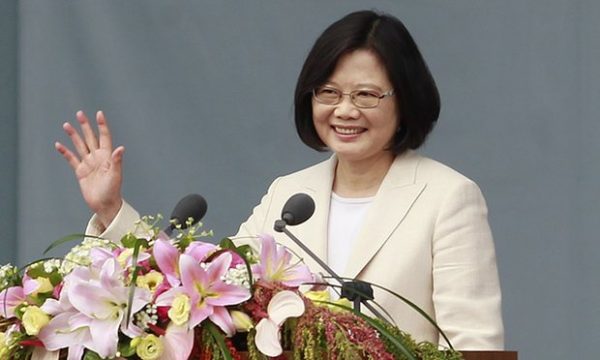
According to a report from Xinhua, the Chinese state media outlet, China’s Taiwan Affairs Office spokesman Ma Xiaoguang said on Saturday that only by Taiwan confirming the One China principle – which dictates that the island of Taiwan and mainland China are parts of a single Chinese state – could “cross-Strait affairs authorities continue regular communication.”
Ma said the Chinese and Taiwanese authorities had had active interactions since at least 2014 through a hotline and other means, after establishing a regular mechanism that was based on a political agreement called the 1992 consensus.
Ma said the communications arrangement had allowed the countries “to contact each other in a timely fashion, avoid misjudgments, keep disagreements under control, and it was also conducive to enhancing understanding and mutual trust.”
“With the operation of the regular communication mechanism, some ‘impossibilities’ in cross-Strait relations have become realities,” Ma said, according to the Xinhua report.
Tsai Ing-wen, leader of the Democratic Progressive Party (DPP), which has traditionally favored independence from China, was sworn in on May 20, replacing China-friendly Ma Ying-jeou of the Nationalist Party (KMT). Ma had led Taiwan for the past eight years.
Although Tsai, Taiwan’s first woman president, said in her inauguration speech on Friday that Taiwan would play a responsible role and be a “staunch guardian of peace” with China, that was considered by China to be insufficient acknowledgment of the One China principle.
After Tsai’s speech on Friday, the Taiwan Affairs Office said Tsai’s remarks were an “incomplete answer,” while an editorial published on Saturday in the People’s Daily, the official newspaper of China’s ruling Communist Party, said that “Taiwan’s new leadership must complete their currently incomplete response.”
“We will not only listen to what she says, but also see what she will do,” the People’s Daily said in its commentary, according to Xinhua.
China wants Tsai to explicitly endorse an interpretation of the One China principle that China says was agreed with the KMT under a framework known as the 1992 Consensus.
According to China and the KMT, the 1992 Consensus, reached at a meeting that year between semi-official representatives of the two countries, provided a tacit understanding that the geographic territory of Taiwan belonged to mainland China but that both countries were free to pursue their own interpretation of what “One China” meant.
But Tsai’s DPP does not accept that there was, in fact, a consensus in 1992.
China and Taiwan parted ways in 1949, when KMT was forced to retreat from the mainland to Taiwan by the Chinese Communist Party. No armistice or peace treaty has ever been signed and China views the territory as a renegade province that can be re-taken by force if necessary.
Although there have been rocky patches with military action threatened over the decades, relations between the two countries had warmed since 2008 under Ma Ying-jeou’s administration.
The DPP wrested power from the KMT in a January presidential election.
Since the election win,Chinese commentators have piled pressure on Taiwan’s new president to publicly acknowledge the 1992 Consensus.
In the weeks leading up Tsai’s inauguration, China repatriated to China Taiwanese individuals suspected of perpetrating cyber-crimes from Kenya and Malaysia. China’s argument: Most victims of the cyber-crimes are on the mainland.
In March, China’s military commemorated a key victory over Taiwan’s Nationalist forces in 1949. In the same month, the Chinese government warned Taiwan not to pass new laws governing relations with China.
CNBC
Leave a Reply
You must be logged in to post a comment.